Disclosure: This post may contain affiliate links, meaning we get a commission if you decide to make a purchase through our links, at no cost to you. Please read our disclosure for more info.
Last Updated on January 20, 2024 by Work In My Pajamas
I’ve always been a “clearance queen” and can’t pass up buying a good deal thinking someone may use that item someday. My gift closet overfloweth. In my attempt to be less hoader like, I set out to minimize my deal collection. Ebay has never been real profitable for me with all of their fees, so I looked into Amazon FBA which I then became infatuated with.
If I told you that I buy stuff on clearance, ship it directly to Amazon and sell anywhere from $10,000 to $40,000 worth of items every month working part-time, that sounds pretty lucrative, doesn’t it?
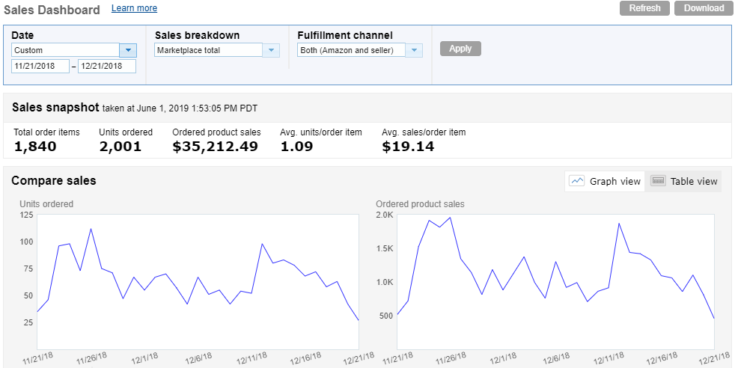
Sure, it does. But there’s always a catch because if it was easy, everyone would do it. I wrote an article a year ago about how I sell items with Amazon FBA. But boy, have I learned a lot since then!
In This Post:
Why Amazon FBA isn’t for everyone
I’m not writing this to try to talk anyone out of trying Amazon FBA. I just want everyone to know that Amazon FBA is not a get rich quick scheme and to share the unknown costs associated with it.
Nebraska recently changed their state slogan to: “Honestly, it’s not for everyone.” Since I live in Nebraska, it only seemed fitting to apply it to Amazon FBA as well.
Now, let’s get to the nitty gritty details that you came for.
Amazon FBA Takes Time
Getting Inventory
Finding items to buy that will make you a profit is called “retail arbitrage” and it is time consuming. You can also do “online artbitrage” by shopping online for good deals, which I do some as well, but in my opinion, there is more competition for those items.
Being the clearance queen, I like to clearance shop. Some people do not. Be prepared for customers and employees to question why you are scanning barcodes of hundreds of items or ask why you are buying cart fulls of the same item.
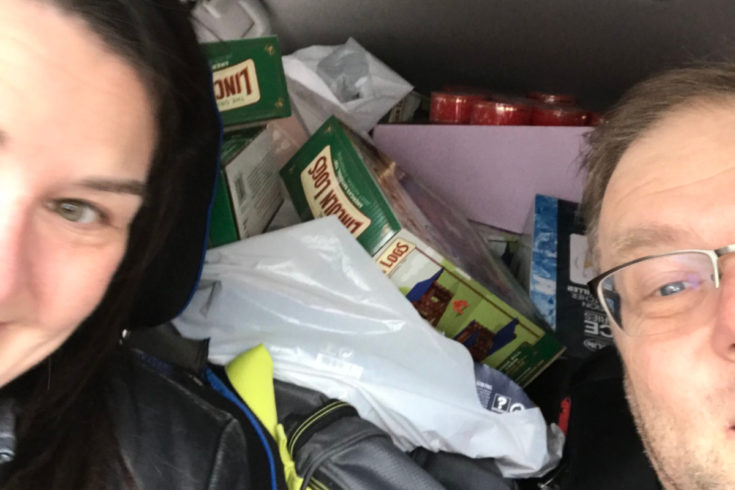
My boyfriend, Ted, is an attorney by day and likes to get away for the weekends. He also likes to drive, which I do not. So after sitting all week in front of my home computer, it’s nice for us to spend time together driving to new places. We try to break it up and take in new sites and scenery along the way.
We usually prepare ahead of time what stores we want to hit and know what products those stores have in stock so we don’t have to spend time scanning products that may not be fruitful.
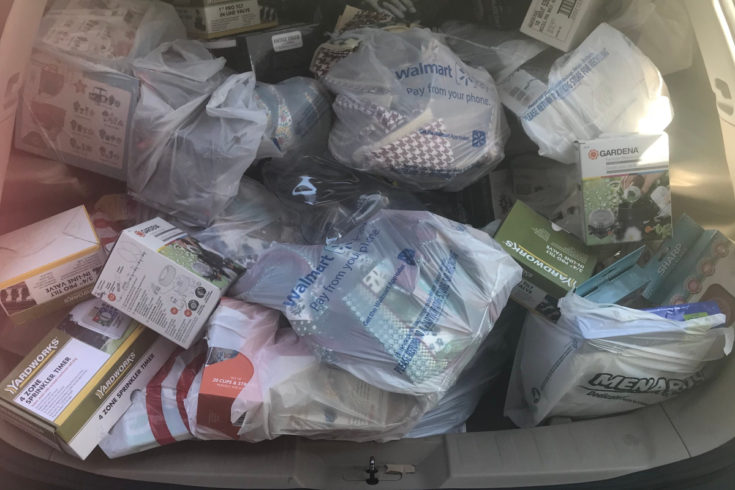
Ted keeps teasing me that I need to get a van so we can buy more inventory in one trip, but my packed-to-the-gills Ford Escape already sometimes overwhelms us. I kid back that if I’m going to get a van, I want an RV van with a bathroom and bed to nap!
Prepping and Packing Inventory
Carrying all of the items into the house or garage from the car is my least favorite part of this side hustle. I take that back – taking off all the clearance stickers (without leaving sticky residue) from the items may take the cake.
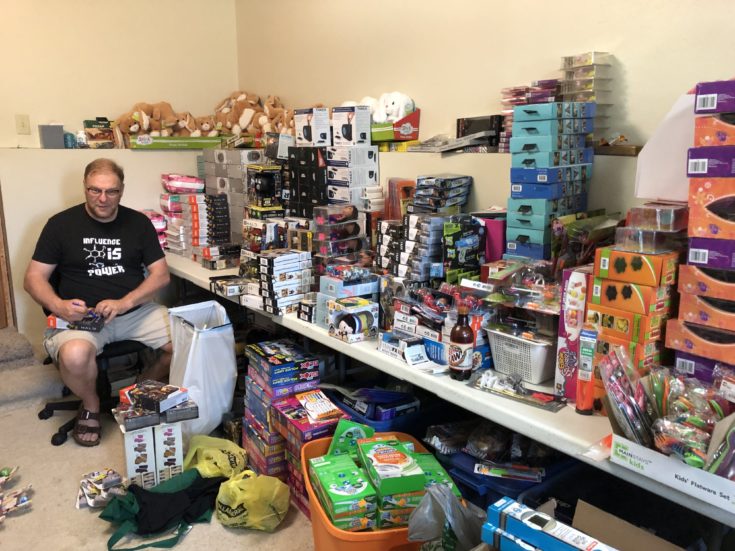
And then there is putting certain items in poly bags. And labeling other items with necessary messages. And counting and sorting. And the list goes on.
Warning – if you come to my house, I will put you to work. Don’t worry, it’s mindless work. If we are going to sit and visit, we might as well be putting items in bags and slapping on labels. Beverages will be provided. My kids always roll their eyes every time I announce a new “family fun time” project.
There are “prep centers” that will supposedly take care of all the mindless, boring work for you, but (1) there are none near me, (2) you have to pay them so that cuts into the profit, and (3) if they screw up, it affects your account.
When we travel overnight, I pack shipping supplies so we can get shipments sent off from the road, which in turn leaves more room in the car. I pack my Dymo printer or print from a hotel business center, and we can drop off FedEx packages at any Walgreens stores.
Record Keeping
When I first started doing Amazon FBA, I simply used Google spreadsheets to keep track of inventory bought (and prices paid), sales tax applied, commission earned (if ordered online), shipping costs, Amazon fees (commissions, storage costs, returns), etc. This was time consuming. And since time is money, I now use several services to help with this, which I’ll cover in a minute.
Amazon FBA Takes Money
It costs $39.99 per month for an Amazon Seller account, but that’s probably the cheapest cost associated. Keep reading to see what I all pay for. Remember, you have to spend money to make money.
Learning Costs
I had originally bought a a course about selling shoes on Amazon as I am the proclaimed President of Shoeaholics Anonymous! Full Time FBA offers a JumpStart Amazon Course which is step-by-step process on how to build a profitable Amazon FBA business.
I’ve also learned from The Selling Family and I even joined their Facebook Group for awhile that shares product deals. They offer a Free Report on how to build your own Amazon FBA business.
You don’t have to invest in a course to get started as there are plenty of free resources out there as well. But doing the research yourself is more time consuming, and the courses will cover things you didn’t think about.
Inventory Costs
You do need to invest money to buy inventory to start this business. Personally, I bootstrapped myself, but some people use credit cards or personal loans. If you choose the latter, make sure you get a low interest rate and calculate that into your inventory costs.
You need to find products priced low enough to be able to sell not only at a profit, but to cover Amazon’s fees as well. My goal is to spend under $5 per item and to sell that item for around $20. More often than not, Amazon’s fees are more than my inventory cost. I have gotten better about buying items with better ranks and finding items with less sellers which all help with sales, but it has been a lot of trial and error.
![]()
From the above screenshot from InventoryLab, you can see that my current average order price is $19.10, the average Amazon fees are $8.15, and the average profit per sale is $8.34. That makes the average cost of the product $2.61.
When I first started, I reinvested all profits into buying more inventory. Most courses that teach you how to do Amazon FBA will tell you that you need $1,000-$1,500 to start off to invest. I personally invested about $8,000 before taking a profit for myself.
Shipping Costs
The cost of buying boxes, packing tape, labels and such adds up. But the cost of actually sending and shipping the boxes to Amazon can get pricey. You do get Amazon’s discount with FedEx and UPS which is significantly lower than if you’d ship the items yourself to the actual customers. But Amazon tells you which warehouses you need to send each items to, and those across the country are more pricier (this is one benefit of living in the middle of the country). I was super excited when I figured out that FedEx is usually cheaper than UPS (UPS is the default shipper, so you need to change for each shipment), and FedEx will pick up the boxes from your house for FREE (UPS charges). This was a game changer trying to get boxes to the UPS Store before they closed. And my FedEx driver is cute which is a bonus.
You can save money by asking friends and family to save all their boxes and packing materials, but once you get up to scale, that will not be enough. I also suggest investing in a laser printer to not only save on inkjet cartridge refills, but then your labels don’t smudge.
Business Costs
Besides the monthly Amazon Seller fee, I pay for several other tools with subscription memberships to save me time. I pay most of them yearly to get a discount off the monthly rates. These are all of the ongoing monthly services I pay for:
- Inventory Lab – I mainly use this to keep track of all expenses associated with each item. It takes into account all of Amazon’s fees and your shipping costs to see the return on investment percentage of each item. It also comes with a more powerful app for your phone that is more robust than the Amazon seller app. And this service makes it easy to add new items in bulk.
- BQool – This integrates with your Amazon account and Inventory Lab and reprices your items to maximize profit and sales. For instance, I was selling one item for $17.99 steadily, and BQool kept increasing my price, yet keeping it the lowest price, and now I sell that item steadily for $34.99!
- AZ Labels – When I bought my Dymo printers, I could never get the labels formatted correctly. This Chrome extension does all of that for me.
- Neat – I bought a Neat receipt scanner that I use to scan all of my receipts. Neat saves them and makes the PDFs searchable so I can look up prices that I paid for items. I also can forward online receipts to my account.
- Ring – I invested in a Ring doorbell for surveillance since I have a lot of packages always coming and going. And the bonus is that I can see when my kids are coming and going!
Travel Costs
Being able to deduct travel expenses, such as mileage and hotels, is probably the best benefit of Amazon FBA as we get to see and experience new places while “working”. Meals and entertainment are only 50% tax deductible, but that’s better than 0% for something we probably would’ve done anyway.
Amazon FBA Takes Space
Remember my attempt to be less hoarder like? Well, now my house over-runneth with “inventory”. I honestly have inventory everywhere, from my garage to my basement to even my living room!
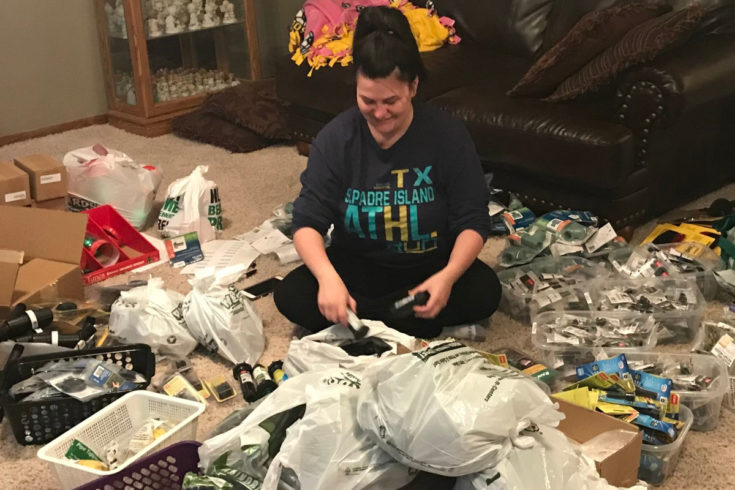
Since the best clearance deals are seasonal items, you’ll need a place to store those items until that season hits within the next year. Yes, you could send the items into Amazon immediately, but Amazon charges long-term storage fees to items that don’t sell in a timely matter. Thus, I have boxes of inventory marked for Thanksgiving, Christmas, Valentine’s Day, etc. in my garage and basement to send in later.
Most of my friends and family said they wouldn’t be able to stand the mess that I have in their house. Luckily (or maybe unluckily in my case), I can live with stepping over items.
Conclusion
Would I want to do Amazon FBA full-time? No way.
Too much gets overwhelming. In fact, after the Christmas rush, we took a break. And we took some unexpected breaks. Every time you take a break, the sales will decline as well so you need to be sending in inventory consistently.
And honestly, I wouldn’t want to do this business by myself. It’s more fun to work side by side with someone to share or compete on finding the best deals and to be able to converse while doing the mindless prepping.
Why do we continue to do Amazon FBA if it’s so much work? Because it’s also fun.
If you don’t like to clearance shop, this isn’t for you. If you don’t have a companion, it may not be for you either. But when we can go away for the weekend, spend time together “scavenger hunting” and then write off the trip? That’s fun to me. And the extra money made is icing on the cake.
The most successful businesses are those that don’t feel like work. ~Kim Rowley



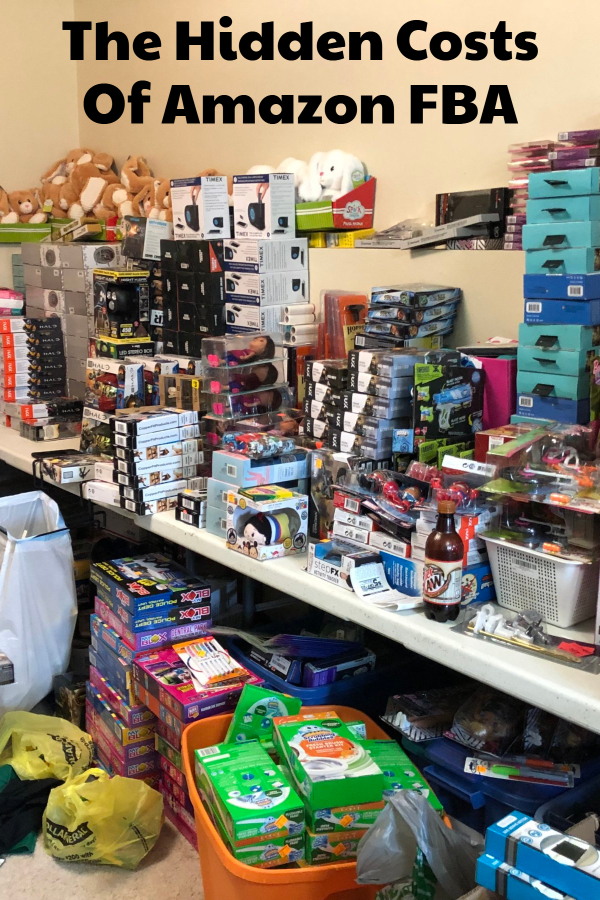

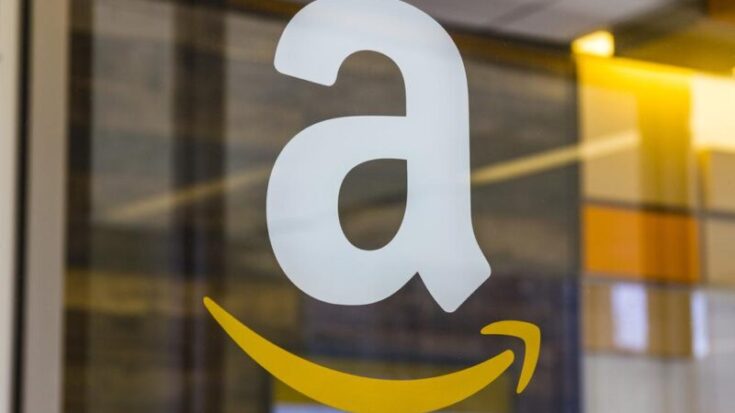
Thanks for sharing this article with us.
Hi wonderful information shared about Amazon.
This article gives some awesome insight into running an Amazon FBA business. I guess my main take-away is you have to enjoy finding – and snagging – clearance items for this to really work.
And your tips…taking the price tags/clearance stickers off everything, along with the sticky residue is something a lot of would-be FBA’ers wouldn’t think about.
I recently wrote an article covering the 3 main ways to work for Amazon (https://thewaryworker.com/how-to-work-for-amazon-from-home/), one of them being Amazon FBA. I think I’ll cite your post in it because it’s so thorough !